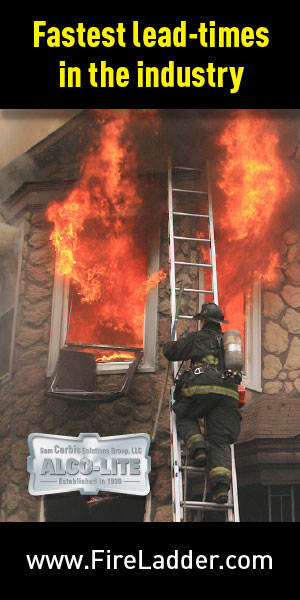Sensors are central technologies in a huge range of modern devices across a diverse range of industries. Explore the critical role and innovations in flame detection sensors for enhanced fire safety and reduced false alarms in various settings.
Introduction to Flame Detection Sensors
Flame detection sensors are a crucial element of fire alarms and fire suppression systems. They are integral to the operation of these vital safety devices which are used in homes, offices, and industrial facilities across the world.
Indeed, a flame detection sensor can be seen as the first line of defense against fire, as it is designed to detect the presence of a fire before it reaches a dangerous level. Upon detection, the sensor is designed to prompt fire protection and suppression systems to trigger. 1
Importance of Flame Detection in Safety Systems
Flame detection is absolutely crucial for safety systems in domestic, commercial, and industrial structures. Aside from protecting the lives of residents and workers, there is an unacceptable economic cost associated with fire losses, which can be minimized by robust and efficient fire detection and suppression systems.
In industrial settings, for instance, large quantities of flammable and explosive substances may be present, such as fuels, fertilizers, feedstocks, and chemicals. Even when a facility follows best practices, there is still an ever-present risk of a small fire starting and spiraling out of control, leading to a potentially catastrophic incident that causes huge loss of life, equipment, and money. 2
Traditional Flame Detection Methods and Their Limitations
A number of different technologies are utilized in flame detectors, depending upon the type of sensor used within them. While all the products on the market have the same purpose, there are some key differences in how they operate, perform, and respond to hazards.
There are five main types of flame detectors: Ultraviolet (UV,) infrared (IR,) (UV/IR,) multi-spectrum IR (MSIR,) and visual flame imaging detectors.
UV detectors, which use UV sensors, possess outstanding sensitivity at short distances but have limited medium-range detection abilities. Suitable for facilities with hazards such as halogen fires, they are sensitive to electrical discharges, so are best suited to indoor use.
IR detectors use thermal imaging cameras but can be triggered by hot surfaces and gases that are not related to fire. UV/IR detectors integrate both UV and IR sensors which operate separately but in tandem, overcoming the limitations of both detection systems. 1
MSIR detectors use a large range of IR wavelengths to distinguish between flame- and non-flame radiation sources. Possessing a good outdoor and indoor range of around 200 feet, they are unlikely to cause false alarms. Finally, visual flame imaging flame detectors differ from UV and IR detectors as they use charged couple device (CCD) sensors.
CCD sensors help these detectors process live video, determining the shape and size of a fire, and providing information on fire hazards which can then be acted upon by the fire alarm or suppression system. However, they cannot detect invisible fires such as hydrogen fires, which can put them at a disadvantage compared to other types of sensor-based system depending on the type of fire.
Innovations in Flame Detection Sensor Technology
Like any sector, innovation is key to improving the response time, speed, and efficiency of flame detectors and flame detection sensors. One innovative system, Spyglass, is a solution to the limitations of conventional flame detectors from Teledyne Gas & Flame Detection, a Texas-based company.
Intended for use primarily in hazardous industrial environments, offshore rigs, and battery storage plants, the Spyglass product range is a series of optical flame detectors designed with response time in mind. The company has stated that the Spyglass family has the best response time on the market today.
Spyglass incorporates both UV/IR and multi-infrared technology. This second technology utilizes three IR detectors, with one detecting the flame whilst the other two identify any background. The system uses advanced algorithms to determine whether a fire is actually occurring, thereby avoiding false alarms. 3
Other innovations in this area have resulted in a growing number of different sensors currently being utilized in flame detectors. These include fuse-element sensors, fiber optics, IR cameras, thermocouples, thermopiles, sound wave-based sensors, and graphene oxide-coated materials, paper, and aerogels. 4
Graphene oxide (GO) reduces to graphene (rGO) when exposed to high temperatures or fire. This causes a change in the electrical conductivity of any coated combustible substances, facilitating the production of promising fire and flame detection sensors.
Applications and Advantages of Innovative Flame Detection Sensors
Flame detection is a crucial part of fire safety and suppression systems, with innovative sensors central to the capabilities of these systems. Historically, fire detection was down to workers or residents raising the alarm: automation has largely overtaken this role, significantly and profoundly impacting safety.
Innovative sensors in recent years have entered the market, and whilst they have some limitations, have improved upon conventional systems such as UV and IR detectors.
However, potentially revolutionary sensors such as GO-coated material-based systems still have some challenges to iron out before they can be fully commercialized. Additionally, they may be more expensive than established options.
Despite the challenges associated with this evolving field of health and safety innovation, new and emerging technologies have better performance and responsiveness to flames and fires, providing earlier detection and reducing the instances of false alarms within homes, workplaces, and challenging hazardous industrial environments.


